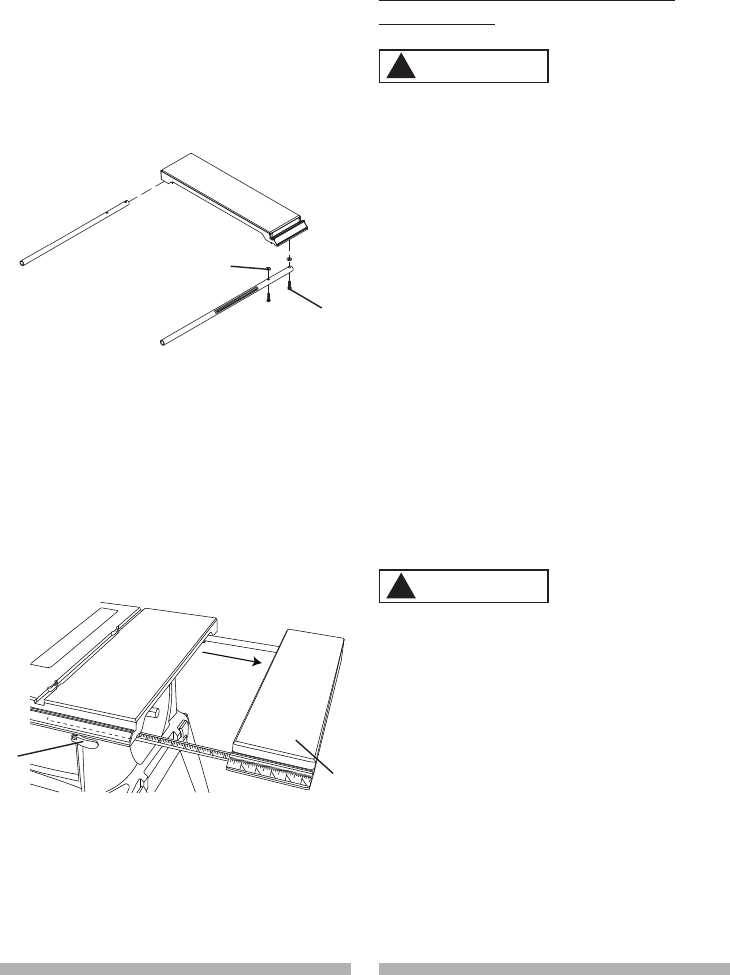
34 35
34 35
USING THE TABLE EXTENSION
(FIG. OO, PP)
If the table extension is not parallel
with the table, remove the bolts (1) and
position the extension leveling spacers
(2) between the table extension and
tube until it is parallel with the table,
then tighten the bolts.
NOTE: See page 14 for table of loose
parts ITEM: S
Fig. OO
1. Release the extension cam locking
levers (3).
2. Slide the extension (4) out until the
correct measurement is displayed
on the tube scale. The user sights
the scale off the edge of the table.
3. Tighten all extension cam locking
levers.
Fig. PP
CUTTING OPERATIONS
There are two basic types of cuts:
ripping and crosscutting. Ripping is
cutting along the length and the grain of
the workpiece. Crosscutting is cutting
either across the width or across the
1
2
3
4
grain of the workpiece. (It is not safe to
rip or crosscut by freehand). Ripping
requires the use of the rip fence, and
crosscutting requires the miter gauge.
NEVER USE THE TWO AT THE
SAME TIME.
Before using the saw each time,
check the following:
1. The blade is tightened to the arbor.
2. The bevel angle lock knob is
tightened.
3. If ripping, make sure the fence
is locked into position and
is parallel to the miter gauge
groove.
4. The blade guard is in place and
working properly.
5. Safety glasses are worn.
The failure to adhere to these
common safety rules, and those
printed in the front of this manual,
can greatly increase the likelihood
of injury.
RIPPING (FIG. QQ, RR)
To prevent serious injury:
● Never use a miter gauge when
ripping.
● Never use more than one rip fence
during a single cut.
● Do not allow familiarity or frequent
use of your table saw to cause
careless mistakes. Remember
that even a careless fraction of
a second is enough to cause a
severe injury.
● Keep both hands away from the
blade and clear from the path of
the blade.
WARNING
!
WARNING
!


















